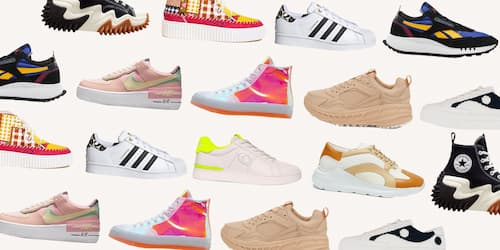Large brands of clothing and footwear move their production to Latin America and Balkans |Americaeconomy |Americaeconomy
Large clothing and footwear companies are moving their production to countries closer to their stores in the United States and Europe, to anticipate the increase in cases of the Delta variant in Vietnam and China, which paralyzed production for several weeks earlier this year.
The decision occurs in the middle of a huge jam in shipments that costs are increasing and forcing companies to reconsider their world supply chains and low -cost manufacturing centers in Asia in Asia.
The last example is the Spanish fashion retailer Mango who revealed Reuters that "accelerated" its production increase process in countries such as Turkey, Morocco and Portugal.In 2019 it manufactured much of its products in China and Vietnam, but will now expand "considerably" the number of units manufactured in Europe in 2022.
Similarly, the American footwear retailer Steve Madden said he withdrew his production in Vietnam and moved 50% of its manufacture of footwear to Brazil and Mexico from China, while the Crocs rubber clog company announced last month the transfer last monthFrom its manufacturing to countries such as Indonesia and Bosnia.
Bulgaria, Ukraine, Romania, Czech Republic, Morocco and Turkey are some of the countries that have aroused the interest of clothing and footwear producers, although China continues to make much of the products for US and European chains.

"We are seeing great growth in the transport activity of goods and trucks in the former Soviet republics (...) A great increase in Hungary and Romania, "said Barry Conlon, executive director of Overhaul, a risk management company of the supply chain.
In Turkey, exports of clothing are expected to reach US $ 20.000 million this year, a historical maximum, promoted by an increase in the requests of the European Union, according to data from the Turkish textile union.In 2020, exports totaled US $ 17.000 million.
In Bosnia and Herzegovina, exports of textiles, leather and footwear amounted to US $ 436.65 million in the first half of 2021, a figure higher than that of all 2020.
"Many companies in the European Union, which is our most important commercial partner, are looking for new suppliers and new supply chains in the Balkan market," said Muris Pozderac, secretary of the Textiles Association, clothing, leather and leather andBosnia and Herzegovina footwear.
In Guatemala, where Nordstrom significantly changed its private brand production volume in 2020, clothing exports exceeded US $ 1.000 million a fines de agosto de este año, un 34,2% más que en 2020 e, incluso, un 8,8% más que en 2019.
Many companies continue to depend largely on Vietnam, where recent production stoppages have caused important disruptions.The government said it will not reach its objective of clothing for US $ 5.000 million en el peor de los casos, debido a los impactos de las restricciones por el coronavirus y la escasez de trabajadores.
Factory inspections in Vietnam - a representation of the manufacturing orders of the retailers - fell 40% in the third quarter compared to the previous period, and the production during those months quickly moved to Bangladés, India and Cambodia.
The inspection rates in Vietnam still had lower levels in the fourth quarter, with a small rebound observed at the end of October, said Mathieu Labasse, vice president of Qima, an audit firm and quality control of the supply chain that representsmore than 15.000 brands.
The VF CORP clothing manufacturer and the Outdoor Activity Brand Columbia SportsWear are some of the companies that warned that there will be delays in their autumn and spring collections and, in some cases, supply assorted.
Capri Holdings, manufacturer of Michael Kors bagfactories recover and catch up ".




